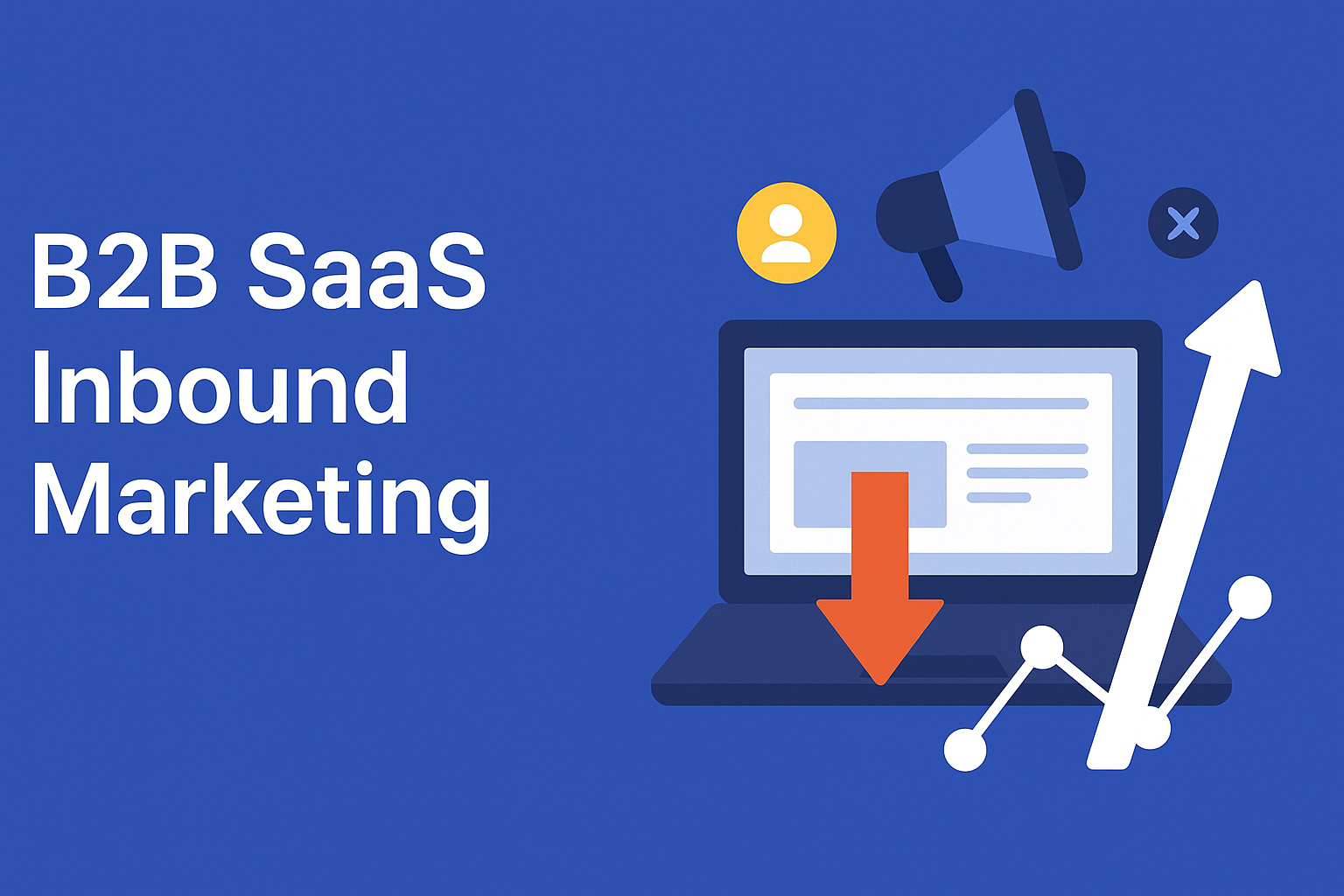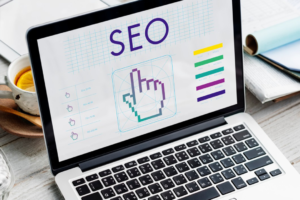The role of B2B SaaS inbound marketing keeps changing as digital tools and buyer expectations evolve. With more information at their fingertips, buyers research longer, involve more stakeholders, and expect a high-quality buying experience.
That makes the SaaS buyer’s journey more complex than ever. Decisions involve larger budgets, extended commitments, and careful evaluation — so your marketing must educate and guide buyers, not interrupt them.
For SaaS companies looking to grow sustainably, inbound is not only and optional it’s a long-term engine for building trust and generating marketing-qualified leads (MQLs). In this guide, we’ll break down the key best practices to help you create a scalable inbound program that delivers results.
What is Inbound Marketing?
Inbound marketing means attracting prospects by publishing helpful, targeted content and experiences. Tactics include blog posts, SEO, social channels, lead magnets, and email. The goal is to draw multiple buyer personas into your funnel, build brand trust, and generate qualified leads through value — not interruption.
Benefits of Inbound Marketing
Inbound helps SaaS companies establish authority and generate leads in a cost-efficient way. Unlike costly outbound tactics, inbound focuses on what prospects are already researching. Align your online presence with what buyers value, and you become a trusted resource on their path to purchasing. That trust creates qualified leads and measurable ROI over time.
10 B2B SaaS Inbound Marketing Best Practices
Before you build or refine an inbound plan, consider how these best practices map to your SaaS model. The first step is understanding your buyer’s journey.
1. Understand Your Buyer’s Journey And Ideal Customer Profile (ICP)
B2B buying has changed. Prospects expect a polished experience and make decisions after research. Studies show a large portion of B2B decisions are influenced by the buyer experience so design yours with care.
Define an ICP: industry, company size, buyer roles, and key pain points. Map the buyer’s stages:
- Awareness: recognizing a problem.
- Consideration: researching solutions.
- Decision: evaluating vendors and purchasing.
- Retention: post-purchase experience and value delivery.
- Advocacy: referrals and long-term loyalty.
Your inbound activities should create awareness, convert interest into action, and prioritize retention. That means strong onboarding, regular health checks, and ongoing value for users. Organic inbound often outperforms short-term paid campaigns because it builds credibility and customer loyalty.
2. Building an Intuitive Website That Converts
Your website is the hub of inbound. If it doesn’t clearly communicate value, visitors will bounce.
Make pages easy to scan. Use clear headlines that speak to outcomes. Present benefits, case studies, and targeted lead-capture forms. Each CTA should match intent like webinar, whitepaper, demo, or newsletter.
Technical and UX basics matter:
- Simple navigation and clear CTAs.
- Fast load times (compress images, limit heavy scripts).
- Clean, brand-consistent design with ample white space.
- Ongoing optimization guided by on-page behavior and analytics.
Great content and messaging are central. Test headlines, refine copy, and keep forms minimal — only ask for essential fields to reduce friction.
3. Content Is King For Your B2B Inbound Strategy
Content drives discovery and builds trust. But “content” is broad. For SaaS, valuable formats include:
- Pillar pages and cluster posts
- Videos and demos
- Webinars and ebooks
- Whitepapers and research reports
- Case studies and testimonials
- User guides, templates, and checklists
- Podcasts, slide decks, and email courses
- ROI calculators and product demos
Content marketing costs less than many traditional channels and often delivers more leads. But it must solve real problems. Pair content with SEO: research keywords your ICP searches, study competitor content, and fill gaps with higher-value material. Avoid keyword stuffing and other black-hat tactics. Promote content through social and email to expand reach.
4. Engaging Prospects Through Email Marketing
Email remains one of the highest-ROI channels for B2B. The rules are simple: keep emails scannable, relevant, and respectful of recipients’ time.
Best practices:
- Write compelling subject lines and clear headers.
- Prioritize quality over quantity to protect deliverability.
- Personalize by name, role, or company where relevant.
- Make emails mobile-friendly — many opens happen on phones.
- Include a clear CTA aligned with your subject line.
- A/B test send times and subject lines to find what works.
Use email not only to convert prospects but to maintain customer relationships newsletters, surveys, and requests for feedback are all part of a retention playbook. Social can help grow lists by directing users to sign-up CTAs.
5. Driving Engagement Through Social Media
Social is a listening and distribution channel for B2B inbound. It’s not just for B2C — many SaaS companies build meaningful presence and community via social platforms.
Make social audience-first. Post insights, answer questions, and share useful snippets from longer content. LinkedIn is typically the highest-value platform for B2B, but other channels (Twitter/X, Facebook, Instagram, YouTube) can work depending on your ICP and content formats.
Track social KPIs like:
- Organic reach and impressions
- Engagement (comments, shares)
- Follower growth
- Clicks and referral traffic
- Leads generated via social
Atomize long-form content into bite-sized posts, short videos, and teasers to maximize distribution with minimal extra effort.
6. Using Analytics to Track and Optimize Your Strategy
Measure outcomes, not just traffic. Build dashboards to track the metrics that matter:
- Organic sessions and top referral pages
- Keywords ranking in top positions
- New contacts / MQLs generated
- Form and CTA conversion rates
- Email open and click-through rates
Set SMART KPIs: Specific, Measurable, Attainable, Relevant, Time-bound. Use dashboards to spot trends and prioritize what to scale. If a topic or format drives qualified leads, double down.
7. Automate Your Inbound Efforts For Scalability (With The Right Tools)
Inbound generates volume. Automation helps you respond and nurture without manual overload.
Build workflows for common behaviors: content downloads, trial activations, pricing page visits. Sync CRM and marketing platforms to maintain clean data. Use lead scoring to prioritize high-intent prospects.
Choose tools that fit your stack. Full-suite platforms reduce integration complexity; mixing multiple systems often adds friction and cost. If you use Salesforce, evaluate its native marketing tools before adding external platforms. The right setup keeps your pipeline organized and responsive.
8. Create a Customer-Centric Feedback Loop
Customers provide the best signals for future content and product direction.
Gather feedback via surveys, interviews, and reviews. Turn strong outcomes into case studies and testimonials. Use customer insights to refine messaging, onboarding materials, and support content.
Closing the loop between product, support, and marketing improves retention and creates authentic content that resonates with prospects.
9. Collaborate Through Co-Marketing and Strategic Partnerships
Partnerships scale reach efficiently. Co-marketing can include joint webinars, co-authored research, or guest blogging.
Choose partners with complementary audiences and aligned ICPs. Share resources like audience insights and distribution channels. Co-marketing adds credibility and exposes your product to qualified prospects without the full cost of paid acquisition.
10. Create Customer-Focused Content for Retention and Upselling
Acquisition is only half of growth. Retention and expansion drive lifetime value.
Produce onboarding guides, advanced how-tos, and feature adoption playbooks. Host regular Q&A webinars and publish release notes that highlight business outcomes. Use content to encourage upgrades and showcase use cases.
Engaged customers churn less and are more likely to buy more. Invest in content that helps them succeed.
Bringing It All Together: Your B2B SaaS Inbound Marketing Roadmap
Short-term tactics may give temporary gains, but they won’t build a loyal customer base. Instead:
- Define your ICP and map the buyer journey.
- Build a conversion-ready website and one or two pillar topics.
- Produce consistent, SEO-driven content.
- Promote content via email, social, and partnerships.
- Automate nurture and measure outcomes with dashboards.
- Iterate based on customer feedback and analytics.
Not everything will win at once. Test, learn, and adjust. Inbound is compounding, consistent effort today becomes predictable pipeline tomorrow.
Frequently Asked Questions (FAQ) About B2B SaaS Inbound Marketing
1. What is inbound marketing in B2B SaaS?
Inbound marketing for B2B SaaS is the process of attracting potential customers by creating valuable content and experiences tailored to their needs. Instead of pushing your product through ads or cold outreach, inbound focuses on earning trust with content such as blogs, webinars, case studies, and SEO-driven resources.
2. Why is inbound marketing important for SaaS companies?
SaaS buyers conduct in-depth research before making decisions. Inbound marketing positions your brand as a trusted advisor, builds credibility, reduces customer acquisition costs (CAC), and generates long-term leads that are more likely to convert into paying customers.
3. How is inbound marketing different from outbound marketing?
Outbound marketing relies on pushing messages to audiences through tactics like cold emails, ads, or events. Inbound marketing, on the other hand, draws prospects in naturally through helpful content, SEO, and social engagement. For SaaS, inbound is typically more cost-efficient and scalable in the long run.
4. What inbound marketing tactics work best for SaaS businesses?
The most effective tactics include:
-
SEO-driven content marketing (blogs, pillar pages, case studies)
-
Webinars and product demos
-
Targeted email nurture campaigns
-
Social media engagement (especially LinkedIn)
-
Marketing automation to scale lead nurturing
5. How long does it take to see results from inbound marketing?
Inbound marketing is a long-term strategy. Most SaaS companies start seeing measurable results in 3–6 months, with stronger ROI appearing as content and SEO efforts compound over time.
6. What role does SEO play in inbound marketing for SaaS?
SEO plays important role that your content gets discovered by the right audience at the right stage of the buyer journey. By ranking for keywords your ICP (ideal customer profile) is searching for, you can consistently attract high-quality leads without relying only on paid ads.
7. Can inbound marketing help with customer retention?
Yes. Inbound itself is not just about acquisition it strengthens retention and upselling. Content such as onboarding guides, advanced tutorials, and customer success stories keeps users engaged and reduces churn.
8. Do SaaS startups need inbound marketing right away?
Absolutely. Even in the early stages, inbound marketing helps build visibility, credibility, and trust. Starting early ensures your content begins compounding so that when your product is ready to scale, your inbound funnel is already working.

vetrivel is an accomplished SEO and digital marketing expert with 5 plus years of experience. dedicated to providing readers with informative and engaging content.




